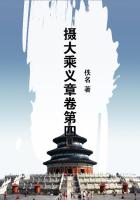and perhaps even for ten degrees of latitude north of Iquique to the Cerro Pasco, not far from Lima: again, we know that a cretaceous formation, abounding with fossils, is largely developed north of the equator, in Colombia: in Tierra del Fuego, at about this same period, a wide district of clay-slate was deposited, which in its mineralogical characters and external features, might be compared to the Silurian regions of North Wales.The gypseous formation, like that of the porphyritic breccia-conglomerate on which it rests, is of inconsiderable breadth; though of greater breadth in Northern than in Central Chile.
As the fossil shells in this formation are covered, in the Peuquenes ridge, by a great thickness of strata; at the Puente del Inca, by at least five thousand feet; at Coquimbo, though the superposition there is less plainly seen, by about six thousand feet; and at Copiapo, certainly by five or six thousand, and probably by seven thousand feet (the same species there recurring in the upper and lower parts of the series), we may feel confident that the bottom of the sea subsided during this cretaceo-oolitic period, so as to allow of the accumulation of the superincumbent submarine strata.This conclusion is confirmed by, or perhaps rather explains, the presence of the many beds at many levels of coarse conglomerate, the well-rounded pebbles in which we cannot believe were transported in very deep water.Even the underlying porphyries at Copiapo.with their highly amygdaloidal surfaces, do not appear to have flowed under great pressure.
The great sinking movement thus plainly indicated, must have extended in a north and south line for at least four hundred miles, and probably was co-extensive with the gypseous formation.
The beds of conglomerate just referred to, and the extraordinarily numerous silicified trunks of fir-trees at Los Hornos, perhaps at Coquimbo and at two distant points in the valley of Copiapo, indicate that land existed at this period in the neighbourhood.This land, or islands, in the northern part of the district of Copiapo, must have been almost exclusively composed, judging from the nature of the pebbles of granite: in the southern parts of Copiapo, it must have been mainly formed of claystone porphyries, with some mica-schist, and with much sandstone and jaspery rocks exactly like the rocks in the gypseous formation, and no doubt belonging to its basal series.In several other places also, during the accumulation of the gypseous formation, its basal parts and the underlying porphyritic conglomerate must likewise have been already partially upheaved and exposed to wear and tear; near the Puente del Inca and at Coquimbo, there must have existed masses of mica-schist or some such rock, whence were derived the many small pebbles of opaque quartz.It follows from these facts, that in some parts of the Cordillera the upper beds of the gypseous formation must lie unconformably on the lower beds; and the whole gypseous formation, in parts, unconformably on the porphyritic conglomerate;although I saw no such cases, yet in many places the gypseous formation is entirely absent; and this, although no doubt generally caused by quite subsequent denudation, may in others be due to the underlying porphyritic conglomerate having been locally upheaved before the deposition of the gypseous strata, and thus having become the source of the pebbles of porphyry embedded in them.In the porphyritic conglomerate formation, in its lower and middle parts, there is very rarely any evidence, with the exception of the small quartz pebbles at Jajuel near Aconcagua, and of the single pebble of granite at Copiapo, of the existence of neighbouring land:
in the upper parts, however, and especially in the district of Copiapo, the number of thoroughly well-rounded pebbles of compact porphyries make me believe, that, as during the prolonged accumulation of the gypseous formation the lower beds had already been locally upheaved and exposed to wear and tear, so it was with the porphyritic conglomerate.Hence in following thus far the geological history of the Cordillera, it may be inferred that the bed of a deep and open, or nearly open, ocean was filled up by porphyritic eruptions, aided probably by some general and some local elevations, to that comparatively shallow level at which the cretaceo-oolitic shells first lived.At this period, the submarine craters yielded at intervals a prodigious supply of gypsum and other mineral exhalations, and occasionally, in certain places poured forth lavas, chiefly of a feldspathic nature: at this period, islands clothed with fir-trees and composed of porphyries, primary rocks, and the lower gypseous strata had already been locally upheaved, and exposed to the action of the waves;--the general movement, however, at this time having been over a very wide area, one of slow subsidence, prolonged till the bed of the sea sank several thousand feet.















